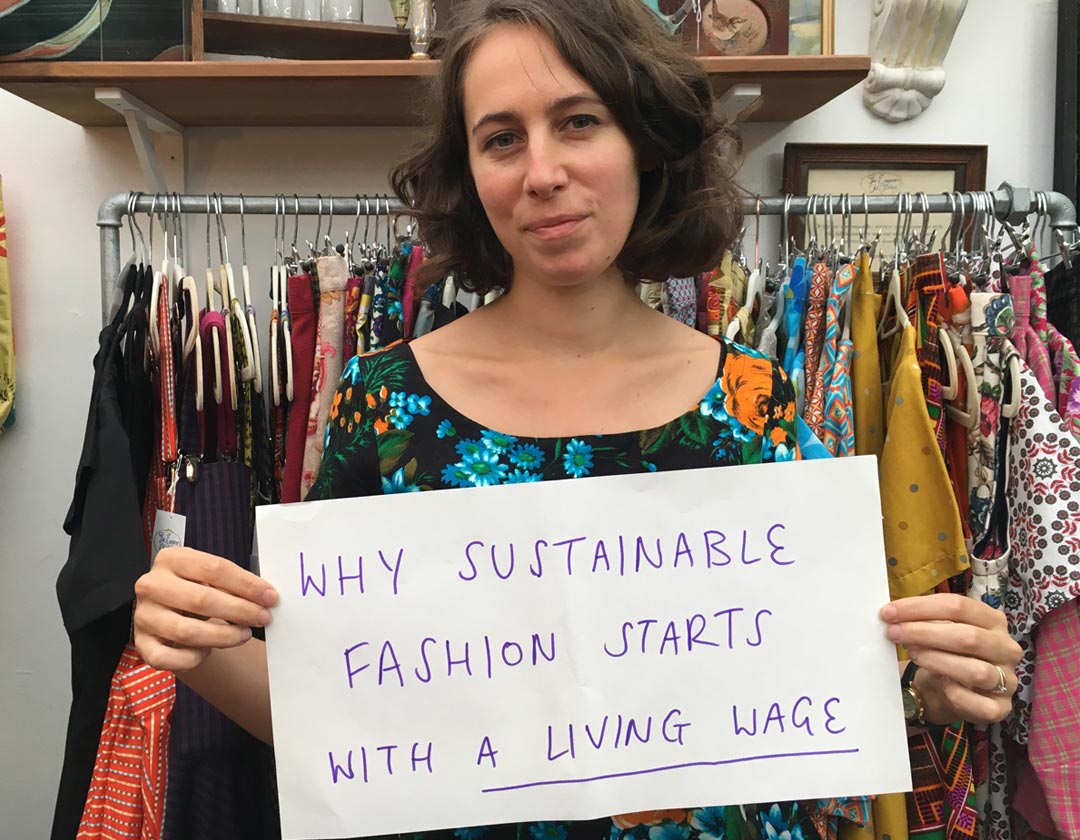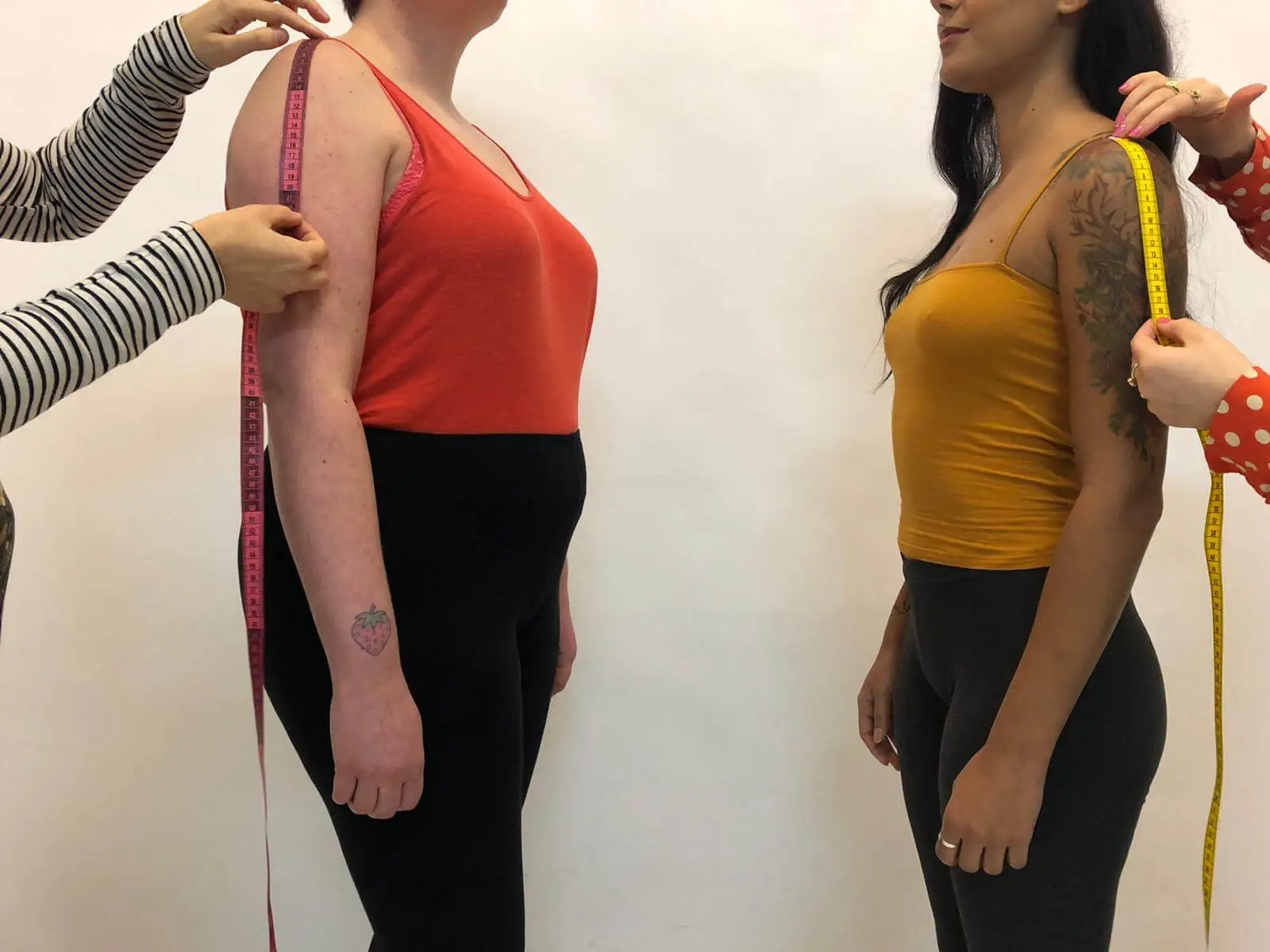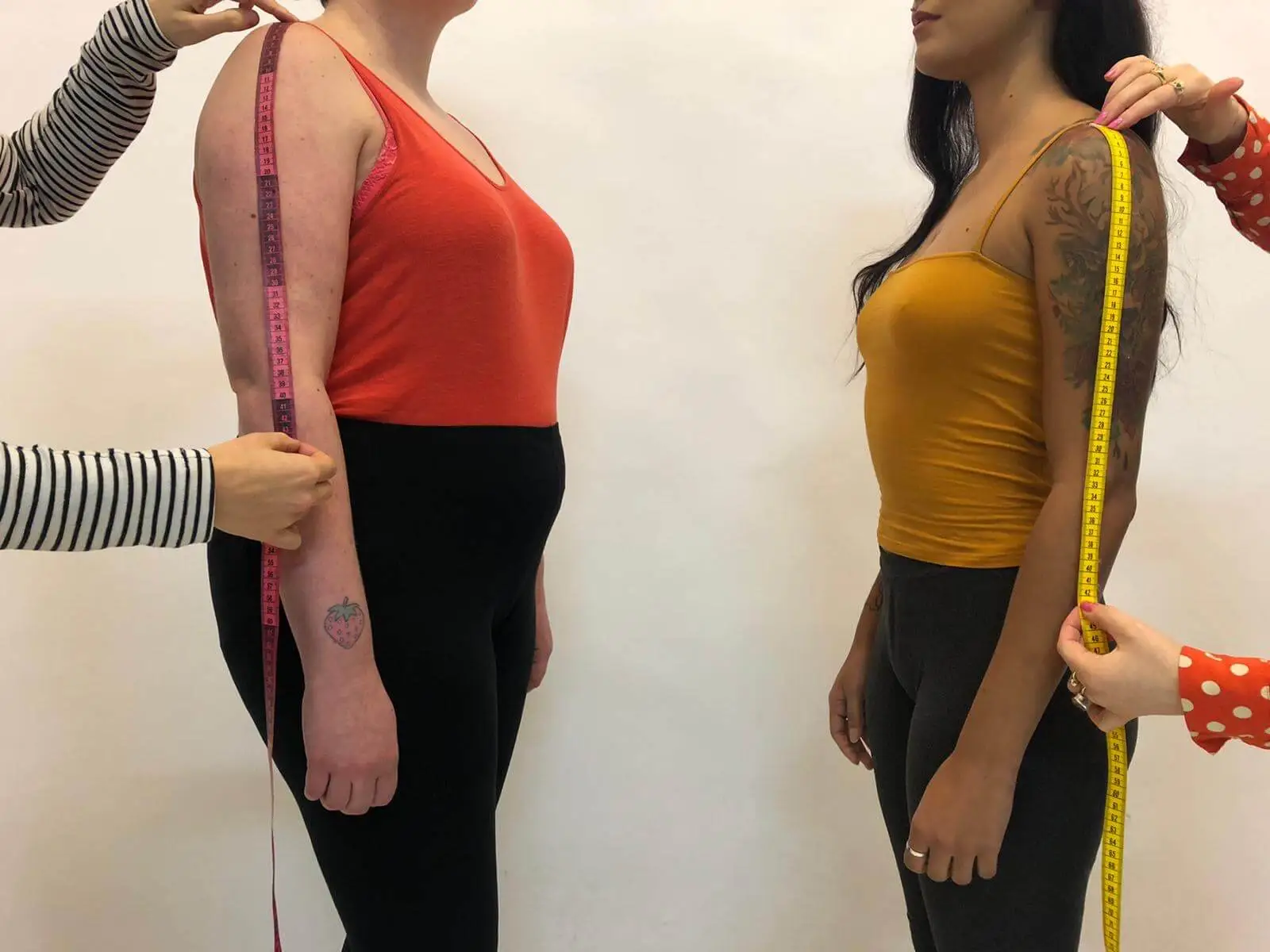SUSTAINABILITY & SMALL BUSINESS BLOG
Why sustainable fashion starts with a living wage

There has been a lot of discussion surrounding the working practices fashion industry since Stacey Dooley’s documentary ‘Fashion’s Dirty Secrets’ aired recently on the BBC. As the owner and designer of a sustainable fashion brand this topic is not news but something that occurs within conversations within our team, with our customers and colleagues on a daily basis.
A lot of incredible work is being done in raising awareness of these issues by organisations like Fashion Revolution which our followers will see regularly reposted and discussed in our social media feeds.
But this isn’t enough.
I believe it’s up to each and every one of us in the industry to be held accountable but also to make our individual voices heard. So today I’m going to share my story and explain why sustainable fashion starts with a living wage.
The power of teamwork
I’ve always wanted to be my own boss. As a young girl I showed an entrepreneurial streak selling stained glass artwork and eventually t-shirts and accessories to top up my allowance throughout secondary school and college. The independence, creative freedom and decision making all equally appealed to me.

However it is one thing wanting to work for yourself – employing others is quite another.
With a background in hospitality and management pre-Emperor’s I’ve experienced first-hand the benefits and power of teamwork. That wonderful flow of productivity when you & your team work hand in hand to get that project finished on time, the to and fro of ideas in creative meetings and – not to be underestimated – that support network when things don’t go to plan.

For me businesses and brands aren’t about the flashy logos, the marketing and the sales pitch – they’re about the people and the message.
When you take the leap from working solo to employing others and developing a team, it’s not just a sign that your business is growing. I believe the way you construct and manage your team is an active definition of your values and a reflection of how you think society should be. What kind of culture will you create? Are you developing a team or a staff? (There’s a difference) How will you expect your employees to treat each other? What will you prioritise – your team or your bottom line?
There’s a lot of responsibility involved, and I don’t just mean the paperwork.
As my business has experienced rapid growth over the last few years so has my team; going from just me to a couple of us up to a team of eight and now to a team of seven. My past experience in management has set me in good stead to keep these questions present and at the forefront of my mind throughout all the growth and changes behind the scenes in my business.

Whilst I may not have been able to articulate it at the beginning of setting up my business a few points have been central to the ethos and culture I have wished to create behind the scenes at The Emperor’s Old Clothes:
– To work with motivated, engaged and creative individuals
– To make sure these individuals feel valued & appreciated
– To ensure my team feels safe and comfortable in each others company
– To help and encourage each other to develop our skills both as a team and as individuals
– To contribute to the local community
Now by no means do I think that we are perfect or that we achieve this list 100% of the time, but I’m proud of the team and workplace that I’ve built over the last few years and a large part of that is pride in being a living wage employer.
What is the living wage?
A living wage is defined as ‘A wage that is high enough to maintain a normal standard of living’. This meaning of ‘normal standard of living’ can obviously be debated at length and depends heavily on factors like where you live, Brighton – where we are based – having a particularly high living cost in terms of rents, tax and commodities.
Let’s check out what this actually means for the UK (April 2018) –
– The Minimum wage (government minimum) for under 25s = £7.38
– National Living wage (government minimum) for over 25s = £7.83
– The Real Living Wage (wage rate based on what people actually need to live) = £8.75 across UK £10.20 in London
– Previous National Living Wage (over 25s) – 2016 = £7.20 2017 = £7.50 (Gov.UK)
The campaign for the living wage was started in 2001 by Citizens UK. At the time government minimum wage was just £3.70 an hour for under 25s. In 2016 the government raised minimum wage for over 25s and again in 2017 – this is known as a National Living Wage.
The Living Wage Campaign argues that the government ‘national living wage’ is not based on the costs of living a decent life – such as being able to buy healthy food, heat your home and buy things like a birthday / Christmas present for your family but is instead calculated on a target to reach 60% of median earnings by 2020. Under current forecasts they calculate to to rise from £7.50 to just under £9 an hour by 2020.
The ‘real living wage’ set by this campaign is independently calculated factoring in the expenses people need to meet not simply to get by but to have a decent standard of living.
Since the campaign began over 4,400 organisations in the UK such as Houses of Parliament, Oxfam, IKEA, Nationwide & ITV have chosen to voluntarily join the living wage movement – including us! As you can imagine 95% of living wage businesses have benefited – in terms of reputation, motivation of employees and in improved relations between managers and staff.
I first heard about the living wage campaign a couple of years ago whilst attending an event held by my local Chamber of Commerce. In immediately recognising an alignment of values between the campaign and my business ethos I headed straight to their website after the event to check out what being a living wage employer meant and how to apply. I was delighted to discover that I was already paying my team well over the living wage making my business eligible and signed up straight away!
Why is the living wage so important to me?
I don’t believe that money buys happiness so this would never be the only measure by which I would would want myself or my team to weigh their worth in our workplace. Saying that I understand the necessity and freedom that financial security brings – we don’t live in a bubble where creative freedom and job satisfaction pays the bills.

We live in a capitalist society – one that is being constantly squeezed by cuts to public funding and austerity measures. As the cost of living continues to rise and public support systems continue to diminish in the UK I feel a growing sense of responsibility as an employer to make sure that the individuals that work so hard creating our beautiful clothing and accessories are treated fairly and appropriately financially rewarded.
Now as you may have noticed The Emperor’s Old Clothes is not IKEA or ITV. We are a small (but growing) independent fashion brand in a crowded marketplace. There is a lot of discussion around sustainable fashion these days much of which focuses on the poor working conditions overseas and the destruction of the environment. I truly believe that these are global problems that today’s society need to start facing and finding solutions to. However I also believe that we simultaneously need to look closer to home.

Have you found yourself hopping online to buy some convenient fast fashion whilst the next day bemoaning the boarded up shops with ‘to let’ signs on streets in your local area? Whilst many of us feel powerless in today’s society there is something we can do: we can choose where we spend our hard-earned cash and who benefits from it.
Would you rather add to the bottom line of massive corporations who when you look just a little closer are the ones damaging the environment and out-sourcing production to parts of the world with cheaper labour forces OR put that money, however little, back into the local economy?
Many people complain at the price of sustainable fashion describing it as exclusive and unaffordable. I would agree that there is always more work to be done on inclusivity in most areas of life, and fashion in particular. However until more consumers support growing independent brands like ours the running costs will continue to be so high that there is little wiggle room for us to become ‘more affordable’.
In our case, and that of many other living wage brands, the largest cost behind each product is labour, especially when you dedicate your brand to being 100% handmade. This is because as a living wage employer I’ve decided to prioritise the support and security of my team over pushing for massive profit margins.

To me ‘labour’ doesn’t just mean paying a wage for the amount of hours it takes to make each garment. It also means working in a way that develops the skills of the individuals creating your garments, it means investing in our creativity as a brand and it means empowering women in business. This is not an afterthought – as a feminist I believe in the empowerment of women in the workplace and this includes financial empowerment not simply creative stimulation and developing employability!
It is hard to achieve such high aspirations when you’re starting out and some sacrifices always have to be made. For instance we currently work with the fashion communications department at Brighton University offering their third year students marketing internships during their placement year. I would love to be able to offer these placements as paid internships but right now that isn’t feasible.
Instead we make sure our interns get a wealth of experience and the chance to make a real impact during their time with us and develop lots of skills they’ve told us first-hand they rarely get to have with larger brands. I believe there is also real value in working with a variety of companies of different sizes and business models. Students often find small sustainable brands like ours hard to get experience with as many don’t have the time or resources to offer placements.

We also offer a seamstress training programme which has proved very popular for those considering entering this industry but who aren’t sure what it’s like to work in a studio environment. The programme is one day a week and lasts 4-6 months. In this time the trainee is fully involved in our production team and gets to try every part of the handmade production process including creating a garment from scratch by themselves that they get to keep at the end of their placement.
Looking to the future
So how does a brand like ours continue to grow and keep to it’s ethics?

It’s up to us to continue to produce high quality, beautiful products and keep working creatively to bring you our best service. However it’s also up to us to be transparent as a team and a brand about our ethics and the issues facing our industry and working practices.

This is so that you, our customers, understand that when you buy from us you are supporting the living wage campaign, you are supporting female empowerment and you are supporting the local economy not simply buying a pretty outfit or gift.
Like I said we can always do better and I’m ambitious for my business.
Here are my goals for the future of The Emperor’s Old Clothes team:
– To offer paid marketing work placements for students
– To offer full-time paid traineeships for those who want to become seamstresses to get work experience and develop their skills
– To continue to pay above the living wage for as long as my business continues
– To be an example for the next generation of fashion entrepreneurs showing that you can participate in this industry on your terms

I believe that the tide is turning on fast fashion and society’s view of consumerism is changing.
This is proved to me everyday by the passion and excitement of our wonderful customers, old and new.
I encourage my fellow sustainable fashion designers and business owners to be more transparent about the decisions and ethics behind their products & business models, to help us all educate each other and make the shift into a more sustainable industry and society.

Sharing my story & viewpoint here is my small personal contribution today – sharing this and the stories of others can be yours!
We’d love to hear your thoughts on the living wage and sustainable fashion. Please comment below or join the conversation with us over on Instagram or Facebook.































Very interesting and inspiring.
Nice Blogs
Nice Blogs 1